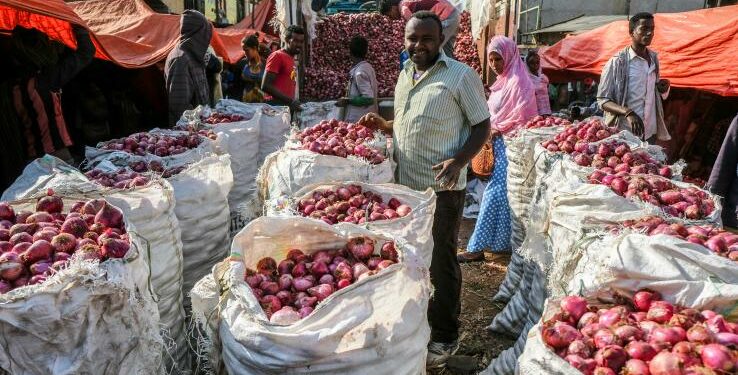Harnessing Technology to Unlock Youth Potential in Agriculture: A Catalyst for Sustainable Development
Introduction
Agriculture is a vital sector in Ghana, employing more than 50% of the workforce and contributing significantly to the country’s gross domestic product. However, the sector faces several challenges, including low productivity, limited access to markets, and inadequate use of technology. One of the major problems facing the youth in agricultural in Ghana is the absence of technology. The majority of youth in Agriculture lack access to modern agricultural technologies, such as precision farming tools and mobile phone applications. Lack of access to technology hinders the ability of youth in agriculture to improve their productivity, efficiency, and profitability, ultimately affecting their livelihoods and the overall development of the agricultural sector. Due to these factors, most youths are diverting their attention to other fields where the work is not tedious and more lucrative. This has affected the number of the youths in the sector, leaving the aged to struggle in the sector. Therefore, there is the need to look at modern way of farming with less manual labour involvement and the solution is the use of technology in agriculture. This technology will encourage the youth to go into serious agriculture as a business due it flexibility and easy access to the market online.
Youth Empowerment
Youth empowerment in agriculture involves providing young people with the skills, knowledge, and resources they need to become successful farmers and entrepreneurs (Karel, 2017). This can be achieved through training and capacity-building programs, access to finance, access to markets, and mentorship and coaching (Aker, 2011).
The Role of Technology
Technology plays a critical role in unlocking youth potential in agriculture. Mobile phone applications, for instance, can provide young farmers with access to information, training, and markets (Kamilaris, 2017). Precision farming techniques, such as drones and satellite imaging, can help young people optimize their agricultural production (FAO, 2019). Online platforms can provide young people with access to markets, finance, and training (World Bank, 2019). The use of technology in agriculture can be a catalyst for sustainable development. It can help young people increase their agricultural productivity, improve the efficiency of their production, enhance their resilience to climate change, and create jobs and stimulate economic growth (IPCC, 2019). In Ghana, for example, the use of mobile phone applications has revolutionized the way farmers access information and markets. The “Farmers’ Companion” mobile phone application, for instance, provides farmers with access to information on best farming practices, market prices, and weather forecasts (Karel, 2017).
Similarly, the use of precision farming techniques has improved the efficiency and productivity of agricultural production in Ghana. The use of drones and satellite imaging, for instance, has enabled farmers to optimize their crop yields and reduce waste (FAO, 2019).
In addition to mobile phone applications and precision farming techniques, online platforms have also played a critical role in unlocking youth potential in agriculture. The “Agri Market” online platform, for instance, provides farmers with access to markets, finance, and training (World Bank, 2019).
Current State of Technology in Agriculture in Ghana
The use of technology among young farmers in Ghana has shown significant promise in recent years. Various initiatives have been implemented to promote the adoption of agricultural technology, and as a result, few young farmers have begun to reap the benefits. With access to modern technologies, young farmers in Ghana are now able to increase their yields, improve their efficiency, and make more informed decisions about their farming practices. Additionally, mobile technology has enabled young farmers to access valuable information on best practices, market prices, and weather forecasts, further enhancing their ability to succeed in the agricultural sector. While there are still challenges to be addressed, the future of agriculture in Ghana looks bright, with technology playing a key role in driving growth and innovation.
Challenges Ghana Face in Using Technology in Agriculture
Ghana’s agricultural sector faces several challenges in harnessing the potential of technology. One major issue is the limited access to modern technologies, particularly in rural areas where the majority of farmers reside. Additionally, the high cost of technology, such as drones and satellite imaging, makes it unaffordable for many small-scale farmers. Furthermore, the lack of digital literacy and technical expertise among farmers hinders their ability to effectively utilize technology. Poor internet connectivity and inadequate infrastructure also pose significant challenges, making it difficult for farmers to access valuable information and services online. Finally, the country’s agricultural extension services are often under-resourced and under-equipped, limiting their ability to provide effective support and training to farmers on the use of technology.
Benefits of Technology in Agriculture among the youth
The integration of technology in agriculture among the youth is crucial for the future of farming. By leveraging technology, young farmers can increase their productivity, efficiency, and profitability. Technology can provide them with access to valuable information, such as weather forecasts, soil conditions, and market prices, enabling them to make informed decisions. Additionally, technology can help young farmers streamline their operations, automate tasks, and reduce waste. For instance, precision farming techniques, such as drones and satellite imaging, can help them optimize crop yields and reduce the use of resources. Moreover, technology can provide young farmers with a platform to connect with other farmers, experts, and markets, thereby expanding their networks and opportunities. By embracing technology, young farmers can not only improve their livelihoods but also contribute to the sustainable development of the agricultural sector.
Recommendations
To address the challenge of limited technology adoption among youth in agriculture in Ghana, the government and relevant stakeholders must establish a nationwide program to provide youth with access to modern agricultural technologies, such as precision farming tools, mobile phone applications, and online platforms.
Establishment of Technology for Agriculture youth centre in Ghana (Tech4AgriYouth) which should aim to equip at least 15,000 youth farmers with the skills and knowledge needed to effectively use technology in their farming practices.
The program should provide young farmers with access to affordable and reliable internet connectivity, as well as digital literacy training to ensure that they can effectively utilize the technologies provided.
Curriculum of Agriculture in both senior High School and tertiary must make room for the use of technology than absolute way of farming. This will motivate the youth to be attracted to agriculture as soon they leave school.
By implementing such a program Ghana can unlock the potential of its young farmers, improve agricultural productivity, and contribute to the country’s sustainable development.
Conclusion
In conclusion, harnessing technology to unlock youth potential in agriculture is essential for sustainable development. It is crucial to provide young people with the skills, knowledge, and resources they need to become successful farmers and entrepreneurs. By leveraging technology, we can empower young people to take an active role in agriculture and contribute to the achievement of the Sustainable Development Goals.
References
Aker, J. C. (2011). Dial “A” for Agriculture: Using Information and Communication Technologies for Agricultural Development in Africa. Tufts University.
FAO. (2017). The Future of Food and Agriculture: Trends and Challenges. Food and Agriculture Organization of the United Nations.
FAO. (2019). Precision Agriculture: A Guide for Farmers. Food and Agriculture Organization of the United Nations.
IPCC. (2019). Climate Change and Land: an IPCC special report on climate change, desertification, land degradation, sustainable land management, food security, and greenhouse gas fluxes in terrestrial ecosystems. Intergovernmental Panel on Climate Change.
Kamilaris, A. (2017). A Survey on Precision Agriculture using UAVs. IEEE Transactions on Geoscience and Remote Sensing.
Karel, A. (2017). Mobile Phone Applications for Farmers: A Review. Journal of Agricultural and Food Information.
World Bank. (2019). Agriculture and Technology: A Review of the Literature. World Bank.








Very educative and true.
What technology and strategies are the govt bring on board to help these suggested recommendations..Career guidance should be advocated across all school level for the youth to pursue courses in that sector as well.